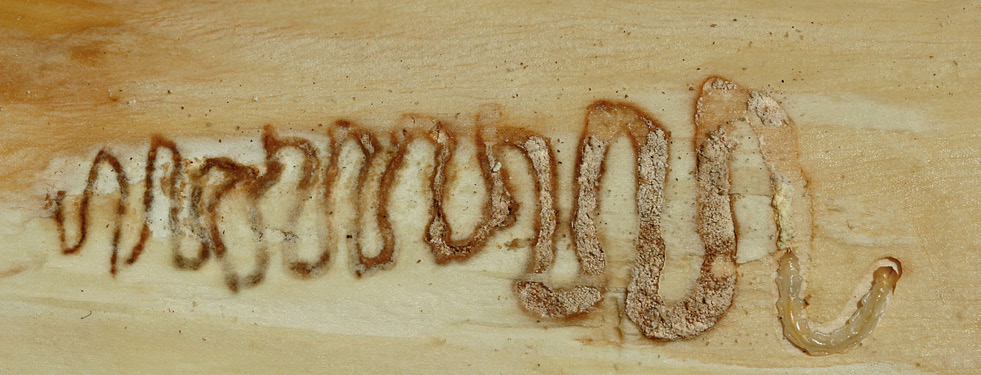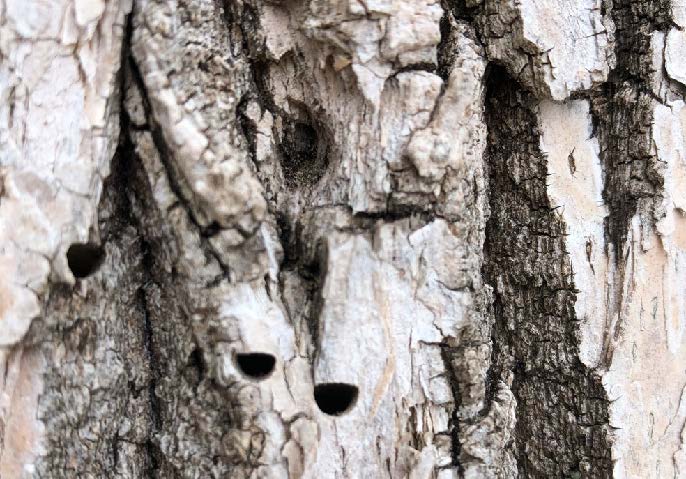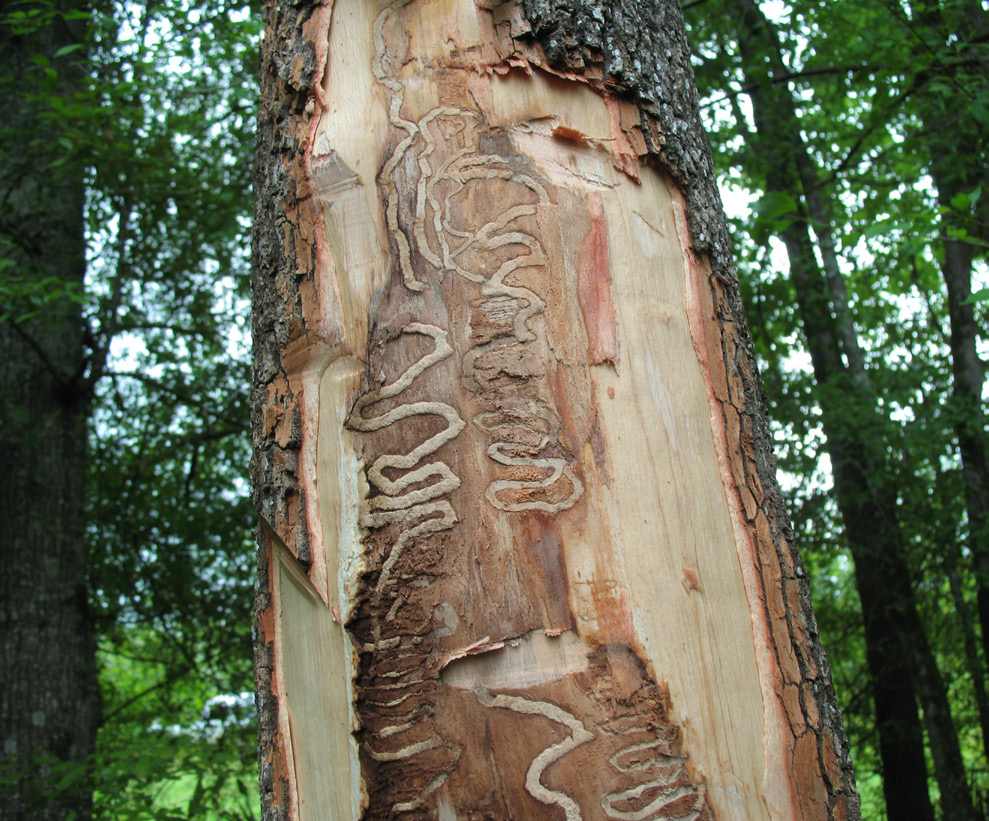Emerald Ash Borer in Oklahoma What to Look for and What to Know
What is the emerald ash borer?
The emerald ash borer is an invasive woodboring beetle now found in much of eastern North America. Originally from Asia, this beetle will attack any species of North American ash (Fraxinus) tree. It is now present in several counties in Oklahoma.
What does the emerald ash borer look like?
Adult emerald ash borers are about three-fourth of an inch long and shiny green and can sometimes be seen crawling around on ash trees. Eggs are about the size of a poppy seed and laid in the bark crevices. Larvae are an off-white color, segmented, and live and feed in the phloem beneath the bark. Pupae are a yellowish color and can be found underneath the bark.
Image 1: Adult emerald ash borer (Agrilus planipennis). Photo by Dr. Matt Bertone, NC State University.
Image 2: Emerald ash borer larva creating a gallery. Photo by David Cap-paert, Bugwood.org.
Image 3: Adult D-shaped exit holes. Photo by Dr. Dave Coyle, Clemson University.
When might I see an emerald ash borer?
In Oklahoma, adults can typically be found from leaf out in mid-May through early July. Larvae feed beneath the bark the remainder of the year.
Do I have an ash tree?
Ash have an opposite branch and twig arrangement along with compound leaves consisting of 5-11 smooth-margined leaflets. Ash flowers are inconspicuous and not often seen. The seed is enveloped by slender “wings,” which result in a helicopter-effect when dropped in fall. The bark is smooth when trees are young but becomes deeply furrowed in a diamond pattern as trees age.
Image 4: Ash tree branch. Photo by vtinvasives.org.
My tree has emerald ash borer. What can I do?
Systemic insecticides offer reliable protection, but treatment can be costly and is recommended only for high-value trees. Treat when emerald ash borers are known to be within 25 miles of your location. Consult a certified arborist for guidance on whether treatment is right for you.
Image 5: Emerald ash borer larval galleries. Photo by Wood Johnson, USFS.
How can I find a certified arborist?
Go to Trees are Good and enter your location.
If you think you’ve seen an emerald ash borer or would like to talk with a forest or tree health professional, please reach out to:
- Dieter Rudolph,
Oklahoma Forestry Services
Dieter.rudolph@ag.ok.gov
(405) 522-8888 - Ryan DeSantis
Oklahoma State University
ryan.desantis@okstate.edu
(405) 744-5463
This map (courtesy of USDA-APHIS) of counties known to have emerald ash borer infestations.





